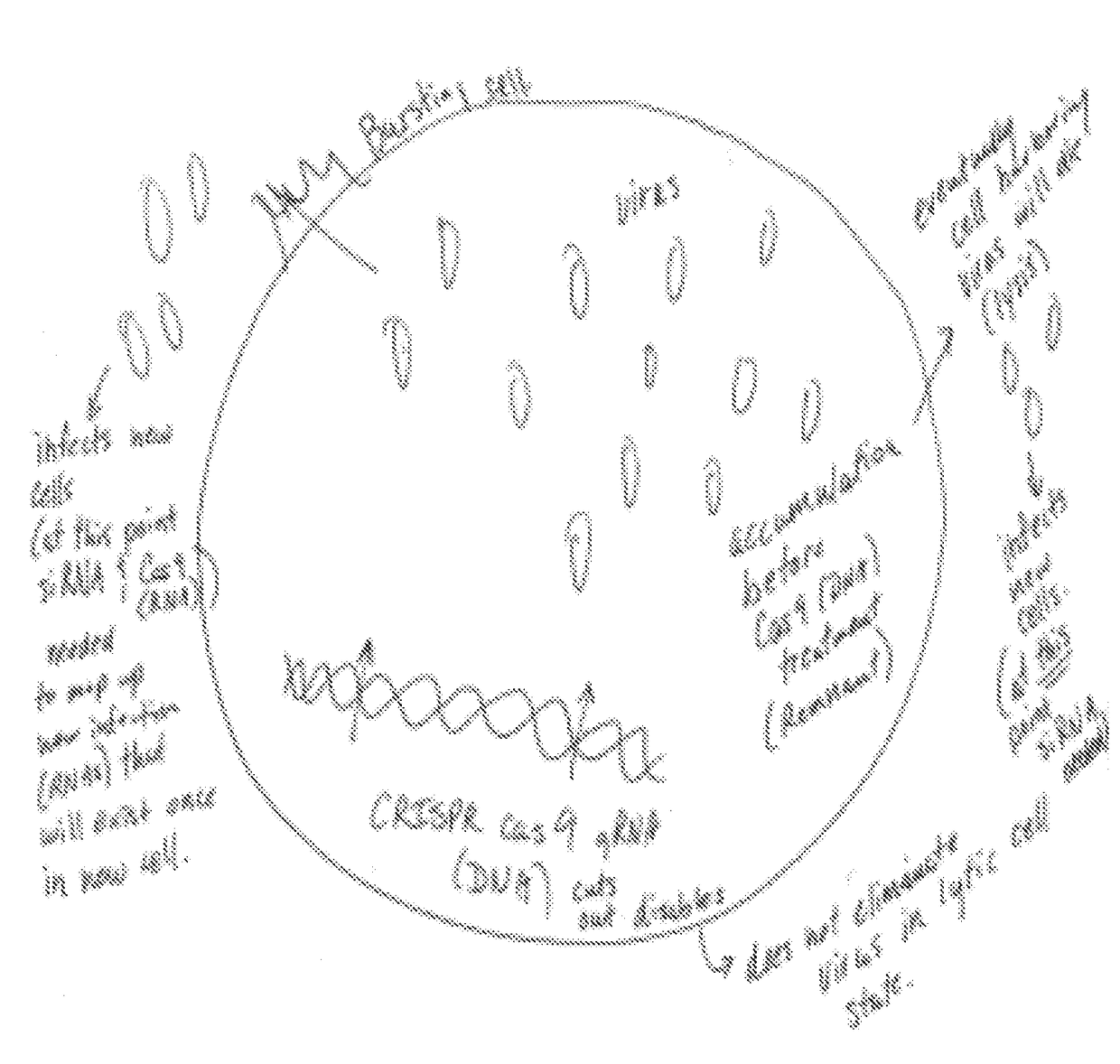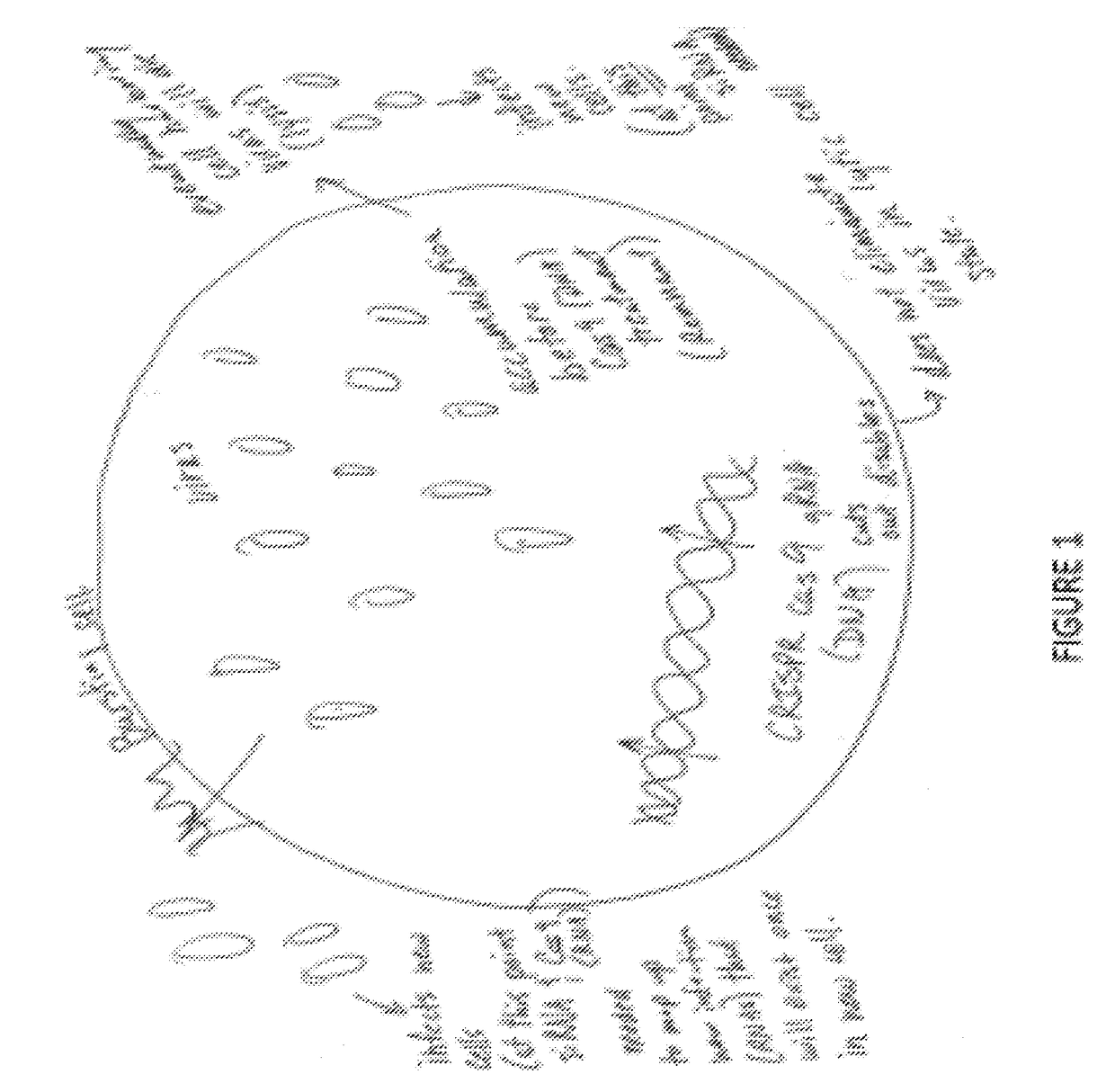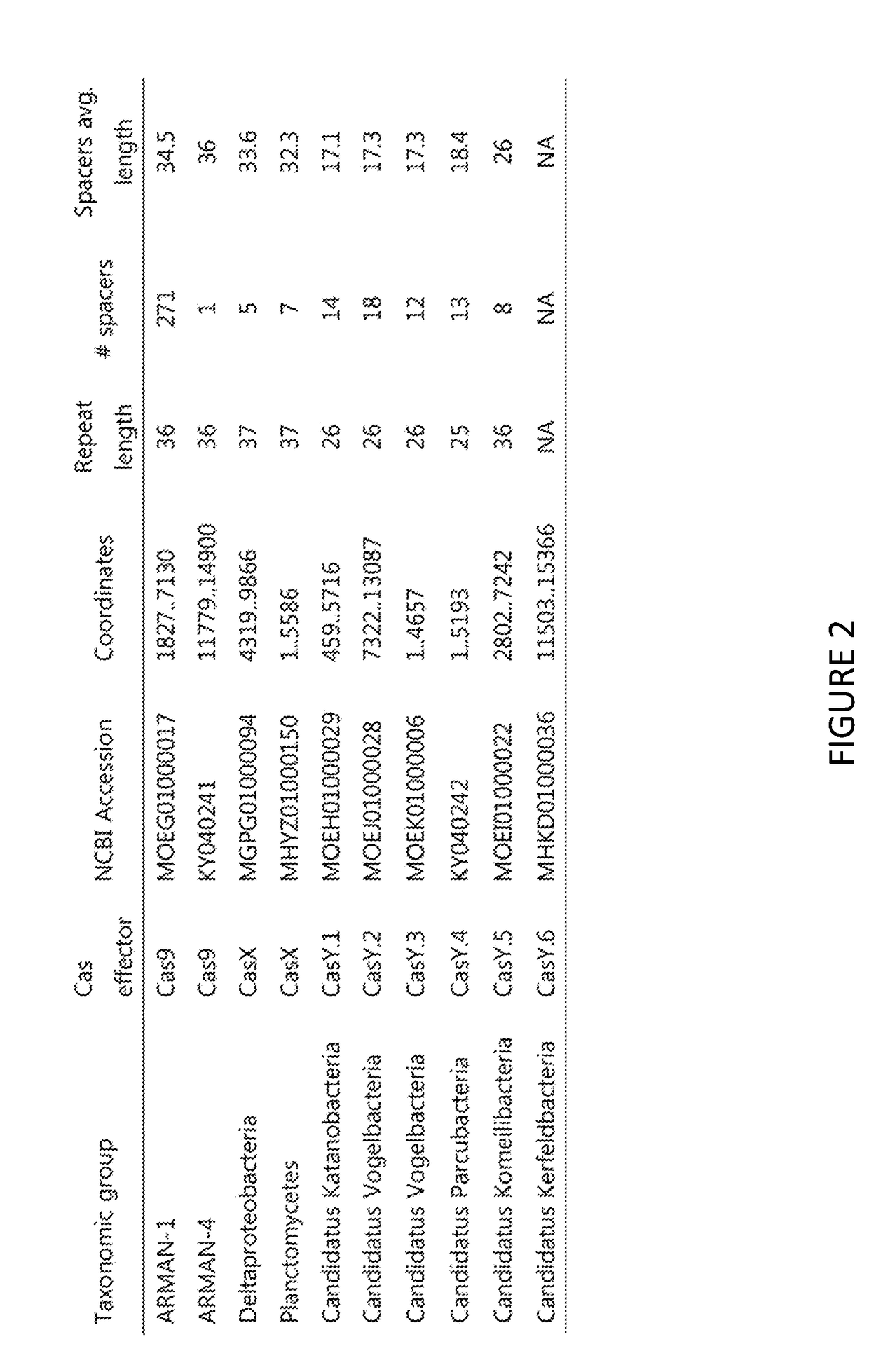CRISPRs
a gene therapeutic and composition technology, applied in the field of compositions and methods for delivering gene therapeutics, can solve the problems of requiring time, producing off-target effects and cytotoxicity, and expensive construction
- Summary
- Abstract
- Description
- Claims
- Application Information
AI Technical Summary
Benefits of technology
Problems solved by technology
Method used
Image
Examples
Embodiment Construction
[0024]The present invention is generally directed to compositions and methods for treating lysogenic and lytic viruses with various gene editing systems and enzyme effectors. The compositions can treat both lysogenic viruses and lytic viruses, or optionally viruses that use both methods of replication.
[0025]The term “vector” includes cloning and expression vectors, as well as viral vectors and integrating vectors. An “expression vector” is a vector that includes a regulatory region. Vectors are also further described below.
[0026]The term “lentiviral vector” includes both integrating and non-integrating lentiviral vectors.
[0027]Viruses replicate by one of two cycles, either the lytic cycle or the lysogenic cycle. In the lytic cycle, first the virus penetrates a host cell and releases its own nucleic acid. Next, the host cell's metabolic machinery is used to replicate the viral nucleic acid and accumulate the virus within the host cell. Once enough virions are produced within the host...
PUM
| Property | Measurement | Unit |
|---|---|---|
| diameter | aaaaa | aaaaa |
| length of time | aaaaa | aaaaa |
| compositions | aaaaa | aaaaa |
Abstract
Description
Claims
Application Information
 Login to View More
Login to View More - R&D
- Intellectual Property
- Life Sciences
- Materials
- Tech Scout
- Unparalleled Data Quality
- Higher Quality Content
- 60% Fewer Hallucinations
Browse by: Latest US Patents, China's latest patents, Technical Efficacy Thesaurus, Application Domain, Technology Topic, Popular Technical Reports.
© 2025 PatSnap. All rights reserved.Legal|Privacy policy|Modern Slavery Act Transparency Statement|Sitemap|About US| Contact US: help@patsnap.com



